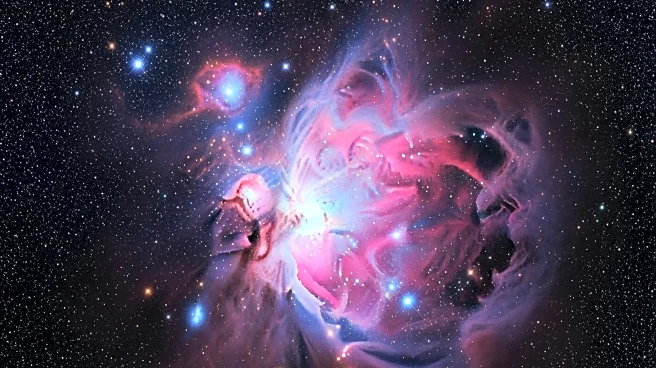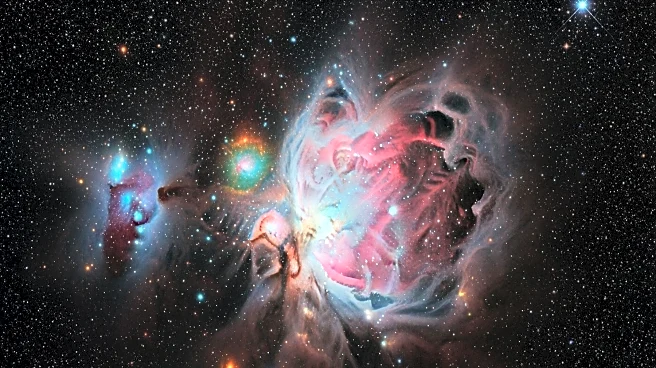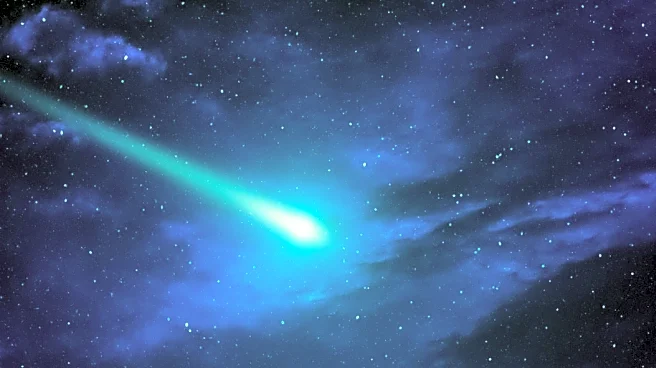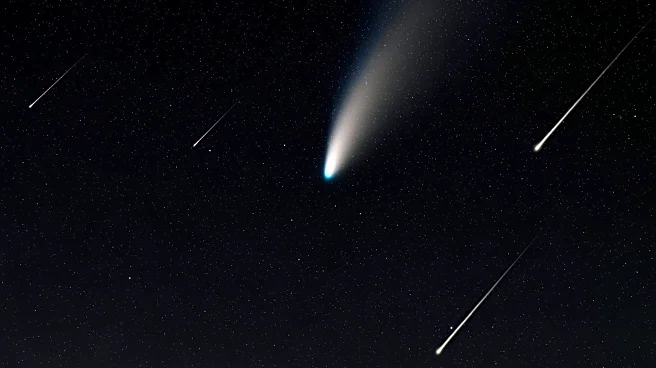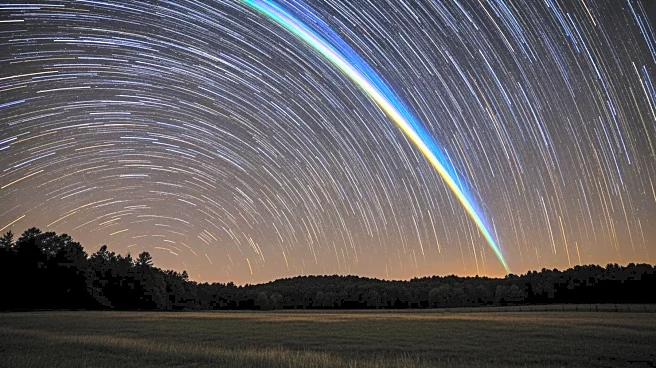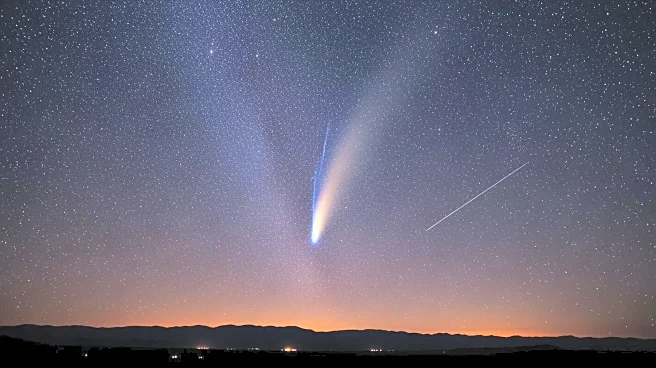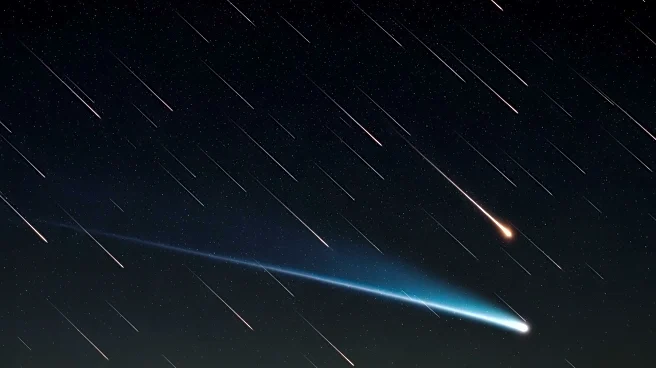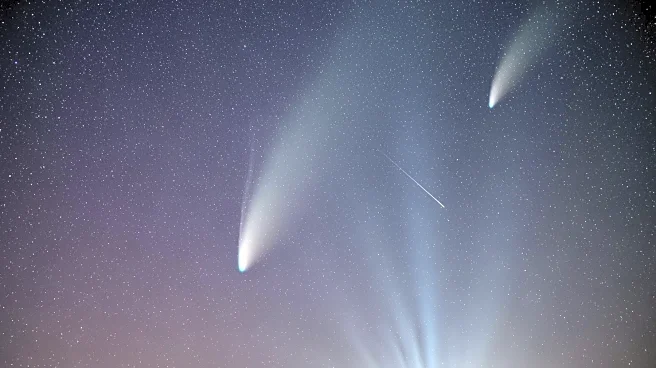What's Happening?
The California Nebula, also known as NGC 1499, is gaining attention as a prime target for astrophotographers. Located in southern Perseus, the nebula is illuminated by the nearby star Xi Persei. Despite
its low surface brightness, the nebula spans approximately 2.5° by 0.5° and glows at magnitude 6. Observing the nebula requires dark skies and is enhanced by using a Hydrogen-alpha filter. The article also notes other celestial events occurring on October 21, including the peak of the Orionids meteor shower, Comet Lemmon's closest approach to Earth, and a Titan transit.
Why It's Important?
The California Nebula's visibility offers a unique opportunity for astrophotographers and astronomy enthusiasts to capture stunning images of this celestial phenomenon. The nebula's low surface brightness makes it a challenging yet rewarding subject for photography, encouraging the use of specialized equipment like Hydrogen-alpha filters. Additionally, the concurrent celestial events such as the Orionids meteor shower and Comet Lemmon's approach provide a rich array of observational opportunities, enhancing public interest in astronomy and potentially boosting engagement with scientific communities.
What's Next?
Astrophotographers and amateur astronomers are likely to plan observations and photography sessions to capture the California Nebula and other celestial events. The peak of the Orionids meteor shower and Comet Lemmon's approach may lead to increased activity in astronomy clubs and online forums, where enthusiasts share their findings and images. The visibility of these events could also inspire educational programs and public outreach initiatives aimed at fostering interest in astronomy.
Beyond the Headlines
The focus on the California Nebula and other celestial events highlights the growing interest in astrophotography as a hobby and scientific pursuit. This trend may lead to advancements in imaging technology and increased accessibility to high-quality equipment for amateur astronomers. Furthermore, the public's engagement with astronomy can contribute to a broader appreciation for science and the natural world, potentially influencing educational curricula and funding for scientific research.
